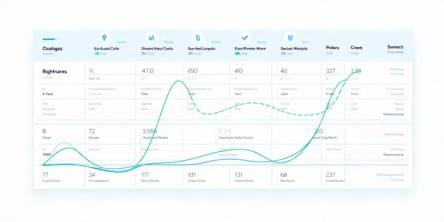How to Form a Perfect Ecommerce App Development Approach

Businesses have spotted that their customers now heavily rely on mobile apps; however, many of them are not able to plan how they should react to the increasing drive created by the smart mobile technology. Maybe they ignore the shift now, but they cannot keep them away from accepting mobility and apps as a core selling channel for a long time. An eMarketer’s research conducted in October 2017 indicates that by 2020, the m-commerce industry would capture 50 percent of the total e-commerce industry.
In December 2016 Business Insider forecasted that the US m-commerce to reach $284 or 45% of the total market size by the year 2020. Amazon doubled its sales via mobile in 2013. 54% of all online visitors to Walmart came from mobiles in the Q42014. In same time period, Amazon received half of all its visitors from mobile devices.
There is no shortage of data indicating similar trends. Actually, mobile platforms and apps in them are turning out to be the main medium for e-retailers as suggested in a study conducted by LexisNexis in 2016.
Without any doubt, more and more e-retailers are going for the m-commerce app development. Does that mean all the m-commerce apps will succeed and deliver the desired results? Believe it or not but many apps, including m-commerce ones, are rolled back because of no or cold response by users. And what lacks in these apps is a strong m-commerce app development plan.
An m-commerce app succeeds when it turns reactive to behaviors and requirements of its users or say customers.
Smartphones are quick devices! They let people access everything in a matter of a few taps. Of course, it’s a good feature, but this quickness has also turned people a bit impatient. They hate waiting for an app taking minutes in getting loaded. From product searching to finding its information, to purchasing it, to paying for it, users want to do everything in matter of a few taps.
It’s not easy to design and develop such experience. It’s difficult for many developers. But an app will not also survive without it. It will fail to deliver the desired results. But don’t lose the hope. Here are the best of the tips that e-commerce startups have to keep in mind while developing an app:
Personalization
Today’s computing has become more personal because of smartphones. We can easily spot that a member in a family will not use the phone of other members. Unlike desktop personal computers which weren’t actually much personal, smartphones are the ultimate personal devices.
When people use smartphones, they use them in their own way. They are free to customize settings and, they do the same to apps. When users download an app, it becomes their own which means they want to use the app in their own style. They want to use an app that allows them to do this level of customization.
An e-commerce app with the feature of individualization allows customers to find brands of their choice just in a blink of eyes. They can easily bookmark a product from any screen they want, add products to a wish-list, and keep the chosen products stored in the wish-list to purchase them in future. They can also make payments in a way so that they do not need to input card details again and again. When an m-commerce app offers this level of personalization, it gets more users in the comparison of those without it.
Serviceability
An app going easy in use will always be preferred by users again and again. When seeing successful apps carefully, we can instantly spot they are greatly simple with easy menus and fully mobile optimized screen layout. Also, elements like buttons, selectors, fields, and next page links play a crucial role and, they are also optimized to look prominent at their place on mobile devices. When an app is designed with keeping mobile screens in mind, the restriction of depending on specific type of devices is just removed. They can deliver the same level of serviceability regardless of the type of devices.
Reduce Data Traffic
The mobility data speed varies from place to place. Even the same sort of network, say 3G or 4G, may have different speeds from operator to operator. Here, the purpose of reducing data traffic is that the app should be optimized to consume the data as low as possible so that it can quickly load up on the slow data speed too.
On the other hand, people do like those apps which get loaded in the matter of flash. The load time should not exceed than 4 seconds. Many apps do not meet these standards and thus stay away from receiving the desired success.
Reduce the data traffic by optimizing several elements in an app to consume low data so that it can also perform smoothly on the low data connections.
Add High-level Security
The most important thing of an e-commerce app is the security of the data transacting between a customer and seller. Neglecting security may turn into huge losses caused to both sellers and buyers. The security can be ensured with the high-level of encryption and secured payment method.
Make Ordering and Registration Process Simple
Users may be distracted by a lengthier registration and ordering process. Many users just don’t buy in an app because it requires them to go through a long registration process. This is called the login fatigue that makes many customers lose their interest in buying a product even when they are interested in buying it.
The problem can be solved by allowing customers to login just with their social accounts or simply with one time password (OTG). Many companies are now using these sorts of login to make registration and logging in easier.
Multi-platform Integration
Apps having capabilities to adapt to the integration of new attributes do succeed. Keep in mind that trends in mobility are changing sooner than our expectations. Device manufacturers are also adding the latest features to their newer devices. Make sure you consider all the possibilities of utilizing these features in your app and also leave scopes for newer features coming in the future.
Similar Articles
Modern businesses are drowning in communication overload, and much of that burden stems from outdated tools that simply can’t keep up
Building lending software isn’t just a technical project—it’s a business decision. Whether you're a fintech founder or part of a traditional lending institution trying to go digital, three questions will shape everything that follows
Learn why robust security is crucial for super app development. Explore key strategies and best practices for mobile app development security.
Walkie-talkies with an extensive reception capacity have changed significantly when it comes to portable communication by displaying cutting-edge features with seamless connectivity that covers more than just the state
USB-C technology has revolutionized the way we charge our devices, offering faster charging speeds, higher power delivery, and universal compatibility across multiple devices
Discover expert mobile app development strategies to create a viral app that attracts users and boosts engagement
Optimize app localization for iOS users across the EU with language, cultural, and regulatory adaptations. Engage users and boost retention with these tips!
Discover the top 10 mobile app development trends of 2024! Explore 5G, AI, AR/VR, blockchain, and more to stay ahead in the ever-evolving app development landscape.
With its triple-lens design and fantastic photo and video quality, the iPhone 11 Pro Max is extensively acknowledged for its superior camera system. But problems can occur with also one of the most advanced technologies. If you're having issues with the iPhone 11 pro max camera lens, knowing the typical problems and how to repair them









